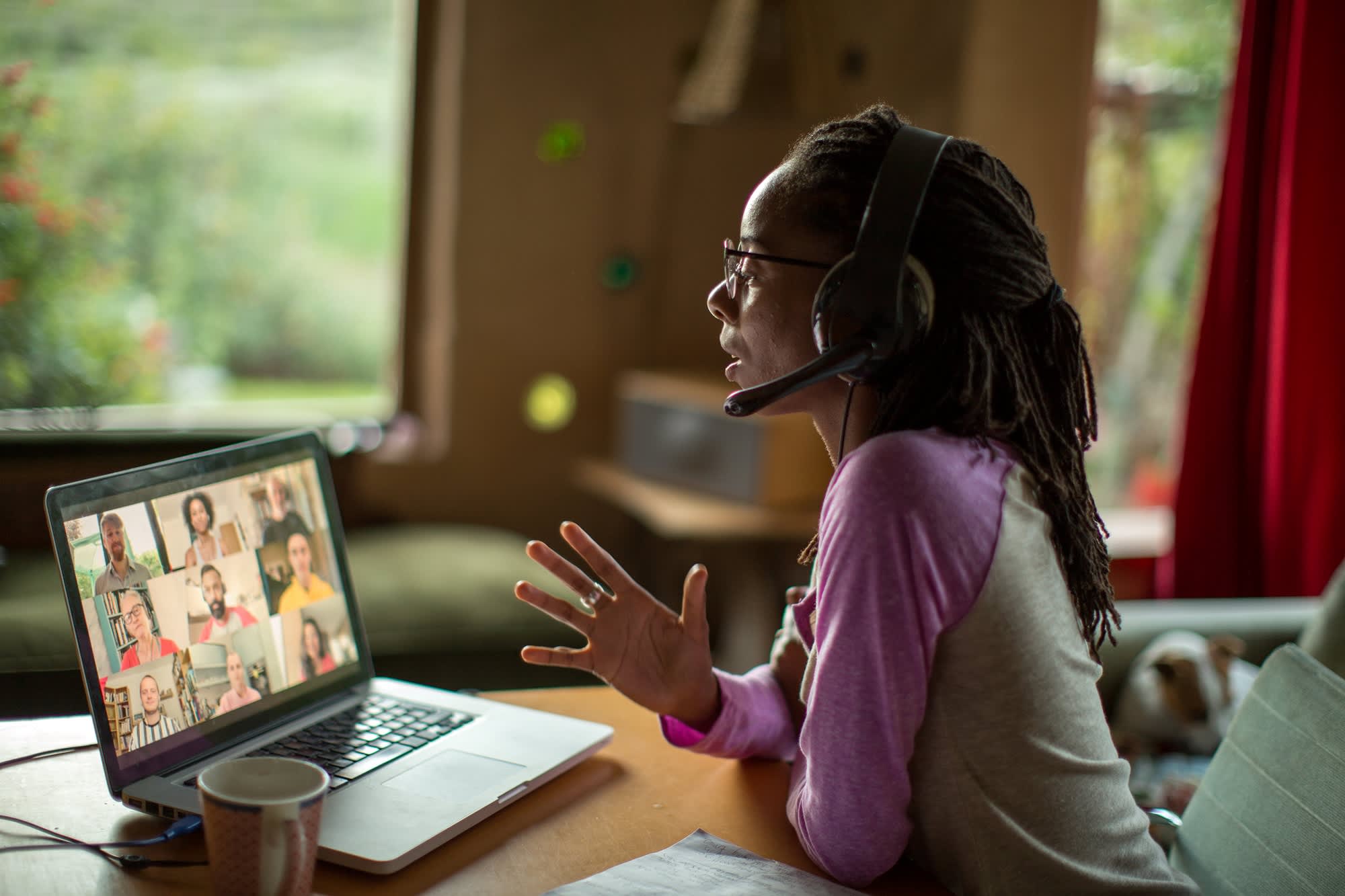
Getty Images
Video calls over Zoom became a lifeline during the coronavirus pandemic for many companies, who suddenly found themselves managing remote, disparate workforces.
In that time, many people have become used to their co-workers’ visages spread across a grid on a screen. But for some, the endless parade of video calls has become a bit too much.
HSBC and Citi have introduced so-called “Zoom-free” days, setting aside a day of the week where employees aren’t expected to be on video calls.
These decisions aren’t just based off anecdotal feedback from staff. There’s an emerging niche in research around the effects that constant video calls are having. As well as Zoom, there’s a range of similar tools that companies use like Slack, Microsoft Teams and Cisco Webex.
Jeremy Bailenson, a professor at Stanford University, has been studying the impact that video call overload has had on people, dubbed “Zoom fatigue.”
“Currently the medium is designed to allow various forms of exhaustion and fatigue — socially, emotionally, and physically,” Bailenson told CNBC.
His research examined some of the main causes of this fatigue: excessive eye gaze, seeing yourself reflected back to you for many hours a day, being tethered to one physical location for extended periods of time, and increased difficulty in interpreting non-verbal cues.
When this setting is the only means of meeting with managers, co-workers and clients, it can take its toll.
Zoom-free days
Many companies, from big corporates to start-ups, feel similar. Tech giants TikTok and Salesforce have imposed some restrictions and limits on the amount of video meetings its employees do.
“The team decided on a no-meeting Friday and we need to give people back some time away from the computer,” Terri Moloney, senior director of employee success at Salesforce in Dublin, told CNBC. “That has morphed and developed into a combination of a wellbeing day and no-meeting day.”
People have remained just as productive while working from home, if not more, she added. But this can mean a blurring of the line between work life and home life and more time in front of a computer screen and in turn, more video calls with colleagues.
Moloney said that a no-meeting day isn’t necessarily a rule to be enforced but rather it’s permission for employees to have time that’s entirely theirs, whether that’s focusing on a particular project or taking part in the company’s wellbeing initiatives.
“To be honest, having the headspace to be able to manage your time and manage your calendar, and knowing that you have that flexibility is half the battle,” Moloney said.
British fintech start-up Plum has been managing a team split between the U.K. and Greece long before the pandemic.
Chief Executive Victor Trokoudes said it was able to take this experience of juggling a distributed workforce and adapt it to the Zoom age.
“Engineers have no meetings on Monday, Wednesday and Thursday in the afternoons. We’ve blocked any Zoom meetings so they can have the focus time to work and not have to jump on a Zoom,” he said.
“The one major thing with the Zoom calls specifically was to really try to focus them in a certain period of time and leave people open time, let’s say in the afternoons, to work more or other days that they wouldn’t have to be jumping onto Zooms.”
Etiquette
While some companies may be cutting down on video calls, the medium isn’t going away either.
Leighton Hughes, VP of sales for the U.K. at video conferencing firm Pexip, said companies need to put careful thought into video call “etiquette.”
“Where we’ve seen customers whose users are most engaged is how they’ve built some etiquette into the meeting,” Hughes said.
“The companies are responsible for driving the right meeting etiquette when we meet remotely,” he said. “That includes small tricks around the gaps between meetings, the number of people in the meetings.”
Hughes said one of the bigger drivers of people getting sick and tired of video is trying to replicate the traditional meeting environment on screen.
There is a technical solution to this with a focus on video and audio quality. Pexip recently inked a deal with Nvidia to assist with processing audio and video using AI in a way that adjusts and optimizes each call to the participants’ visual and audio surroundings.
This may be filtering out ambient noise in the background or automatically adjusting the size and arrangement of grids on screen to reduce the cognitive load for viewers.
“We don’t necessarily think that meeting fatigue is driven by the meeting, we just think the meeting etiquette and the meeting quality needs to improve so that people feel less fatigued.”
Future research
Stanford’s Bailenson said there is more research to be done into the effects that video call overload is having on people.
In another paper he co-authored, it was shown that the effects of Zoom fatigue are more prevalent in women.
He said that future research will need to test different variations of video calls to examine how people respond, such as testing some calls with people not being able to view themselves.
“What we now need is more experimental data that vary the type of features one uses during conferencing to get a better sense of the psychological mechanisms at play,” he said.




